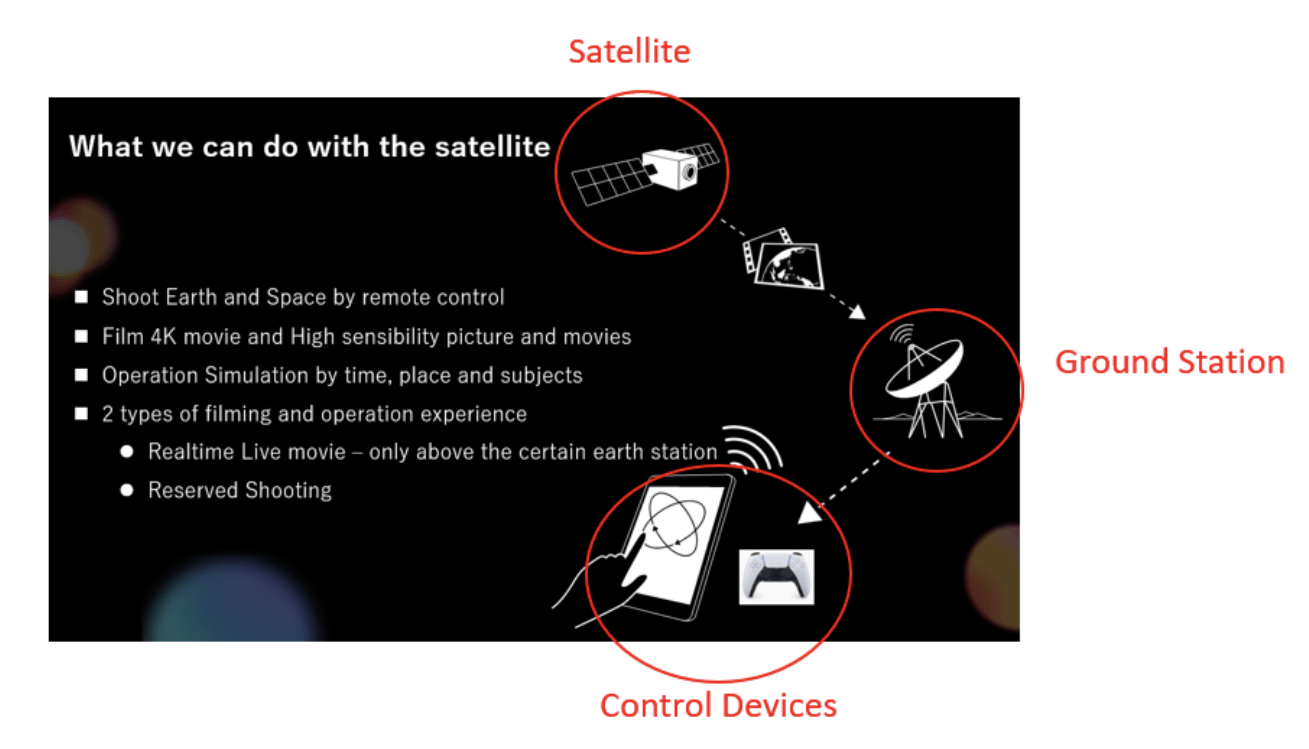Sony putting camera in orbit for shutterbugs, not scientists
SEOUL, South Korea — Sony plans to launch a six-unit cubesat with a full-frame camera later this year as part of its Star Sphere project that seeks collaboration with artists, entertainers and educators.
The Japanese tech giant built the satellite — whose mockup was exhibited during CES 2022 in Las Vegas earlier this month — in cooperation with the University of Tokyo and the Japan Aerospace Exploration Agency (JAXA). While Sony developed the spacecraft’s key components, operating system and built-in camera, the university and JAXA provided a satellite bus and technical advice, respectively.
Once in orbit 500-600 kilometers above Earth, the spacecraft and its built-in camera with a 28-135mm f/4 lens will be linked with an online controller via a ground station in Japan, enabling selected users to capture and record the Earth and stars using a broad range of camerawork options. Those interested in the project can experience how it works through an online simulator.

“We are aiming to find the new value of space with various partners like art, entertainment and education fields using a satellite space camera because it’s only used for space professionals [currently] for research or observation purpose,” Yoshihiro Nakanishi, a business development producer at Sony’s space entertainment preparation office and leader of the Star Sphere project, told SpaceNews via email. “People who have not ever used a satellite camera will newly find values of space, earth and ourselves through the experience of looking down [at] the earth.”
Sony hopes the project will help explore business opportunities in the fields of new media art, documentary production, science museum, showroom, amusement park, education and human resource development.
“Potential target fields are not limited to them. We will be exploring a variety of possibilities,” Nakanishi said.
He said the satellite is scheduled to be launched between October and December but declined to share further details. “We would share about it soon once when we can reveal it,” he said.
He said Sony would build and send more satellites if the project proves profitable.
Meanwhile, Sony is developing inter-satellite laser communication technology, devices and sensors for space use. In September 2019, the company’s Small Optical Link for International Space Station (SOLISS) was launched to the International Space Station aboard Mitsubishi Heavy Industries’ H-2B rocket. Sony developed SOLIS, in cooperation with JAXA, to establish a mass-data communication system for future inter-satellite communications and communications with ground stations, according to Sony website.

Related
ncG1vNJzZmiroJawprrEsKpnm5%2BifLS7zbJkqa2kqbavs4ycmKadopZ6qrqMqKmboaRis7C%2BjKyfrqykmr%2BjwcasZKenpGLApLXEp6uiq6SofA%3D%3D